Articles about Healthcare
Schemas: Strategizing User Experience
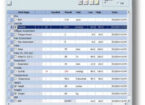
Schemas inform people in performing the simplest tasks to entering data in complex systems such as Electronic Health Records. People use assimilation and accommodation to adapt schemas to new situations, but overreliance on users’ accommodation affects cognitive load and usability. Understanding schemas informs a strategic user experience that focuses on cognitive skills. [Read More]
Directing to Care: Technology to Help Patients Find Their Way

The Mayo Clinic app provides step-by-step navigation through its buildings to direct patients to their appointment’s check-in desk. New research and software focus on wayfinding and obtain usage data through eye tracking glasses. Logistical challenges are covered for conducting this type of research using Tobii glasses in a large hospital. [Read More]
How Mental Health Apps Do (or Don’t) Support Some of COVID-19’s Most Vulnerable Populations
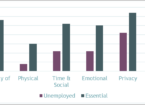
The emotional impact of the pandemic has taken its toll on people's mental health, which has greatly intensified the need for accessible and usable mental healthcare. The UW ALACRITY Center was given a grant by the US National Institute for Mental Health to study the acceptability, usability, and effectiveness of mental health apps for suicide prevention among essential workers and people experiencing unemployment during COVID-19. [Read More]
社会におけるウェアラブル・テクノロジーの採用
ウェアラブル・テクノロジーは将来広く利用されるようになるだろう。本記事では、ウェアラブルデバイスの作成および展開において考慮されるユーザビリティ要因について追及する。 [Read More]
Getting Access to Doctors for User Research
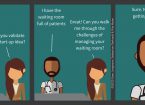
Most first-timers in the healthcare-innovation space find it frustrating to get access to doctors for user research. [Read More]
The Fourth Lens: Making Design Thinking Work for Digital Health
When designing healthcare experiences, we need to prove the effectiveness of our solutions as much as we need to consider their desirability, feasibility, and viability. [Read More]
Can Voice-Driven Virtual Assistants Help Eliminate Physician Burnout?
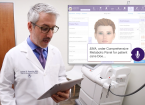
Cumbersome medical software is a leading cause in physician dissatisfaction and burnout. But that story could change if physicians had a voice-driven virtual medical assistant. [Read More]
Five Years of UX Research Operations Improvements at Novo Nordisk: A Retrospective Reflection
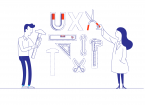
Over the past five years, Novo Nordisk has systematically iterated and improved on their UX research processes, increasing the design influence on product development. [Read More]
Expand Your View: The UX Ecosystem of Healthcare
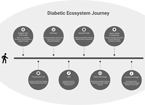
Ecosystems are larger than features and organizations. The user journey expands the entire ecosystem of experience, with multiple touch points along the way. [Read More]
Using Kano across Enterprise Healthcare UX

The Kano model enables representation of customer satisfaction with product features. In this article, two enterprise designers share an Excel and a Tableau template that can be used in usability or survey research. [Read More]
Connected Medical Devices: Using Data to Drive Design Decisions

Usage data that is collected and analyzed from smart medical devices has the potential to change how these devices are designed, resulting in safer and more effective devices. [Read More]
A Review of Contextual Inquiry for Medical Device Design (Book Review)

A review of Contextual Inquiry for Medical Device Design by Mary Beth Privitera. Learn best practices and techniques for applying contextual inquiry to medical device design. [Read More]
User-Centered Design and Food Stamps: Delivering a 21st Century Government Service

A case study from Code for America shows how user-centered design can be used to reduce barriers to accessing social services online and offline. [Read More]
Physician Heal Thyself: A Doctor’s View of Healthcare Software

Doctors, administrators, and IT staff in a hospital often have different views of technology. User experience professionals need to be aware of these differences when designing medical systems. [Read More]
Twinlist: A Multi-Step Interface to Reconcile Medication Lists

Novel spatial layout and multi-step animation help medical staff compare two lists of medications and rapidly select the drugs for a reconciled list, reducing errors. [Read More]
Designing for Vulnerable Users: Illustrations (May) Help Understand Complex Health Websites

Illustrations have the potential to aid in understanding complex health information, but using images effectively requires testing to tailor them to the needs of a wide variety of users. [Read More]
Total Recall: The Consequence of Ignoring Medical Device Usability
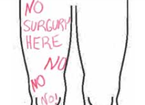
Don't set medical practitioners up for failure. Thoughtful design can prevent errors that cause injuries or death. [Read More]
Useful Personal Health Records: Designing for Accessibility and Innovation

Designing specifically for people with disabilities can lead to electronic personal health records that are not only accessible, but innovative, useful, and beneficial for everyone. [Read More]
Usability Testing for Healthcare Portals: Even Small Problems Add Up

Want to fix the web portals for a major government initiative? Usability testing with health consumers helped improve CoveredCA, a portal in California. [Read More]
Usability in Healthcare: A ‘Wicked’ Problem
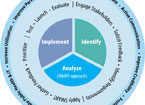
For UX design in healthcare, context is critical. Too many electronic health records have poor usability because they are designed without considering the user experience appropriately. [Read More]
Spanish Language Personas: Informing the Design of Healthcare Websites

Research for Spanish-language personas showed that Latinos in the U.S. have consistent user needs related to culture and language that are applicable to all types of health information websites. [Read More]
UX for Healthcare: What You Need to Know Before You Start

Designing a medical application means paying special attention to patient privacy, safety concerns, and environment where it will be used, as well as legal regulations. [Read More]
Collaborative Healthcare: Credibility and Navigation on the Internet

The Internet enables patients to collaborate with medical professionals to meet healthcare needs – but only when healthcare websites provide credible and usable navigation and organization. [Read More]
Personal Health Metrics and Good UX: Partners in Healthcare

To ensure healthcare programs and applications that use personal metrics are effective in helping people improve their lives, focus on the user experience. [Read More]
Wayfinding in a Hospital: Electronic Kiosks Point the Way

Designing a hospital is a human factors challenge. Good information signs help patients find their way around a large campus. [Read More]
Online Healthcare: Designing Senior-Friendly Privacy

Challenges in creating an online service experience at Philips Home Monitoring for senior users included privacy, user experience, legacy system constraints, and communication. [Read More]
Design for Chronic Conditions: From Understanding to Innovation

Reviews, interviews, and examinations are important but empathic study is crucial for healthy designers to understand the needs of a patient suffering from chronic conditions. [Read More]
Sketchnote: Surgery and the Senses
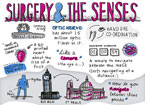
Our intrepid sketchnoter learns about using technology to navigate through the human body. Feeling things you can't see and seeing things you can't touch is changing how surgeons operate. [Read More]
Redesigning Healthcare (Book Review)

A review of Design for Care by Peter H. Jones. Applying design thinking to healthcare systems. [Read More]
Home Front Help
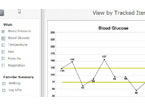
Through particpatory design sessions followed by usability assessments, recruited veteran caregivers design a pilot application that really improves their lives. [Read More]
Mobile Data Collection
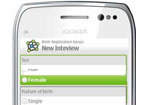
Save time and minimize errors in surveys using a comprehensive mobile-based solution that makes it easier for researchers to collect reliable field data. [Read More]
Engaging with Mental Health: Opportunity for Collaboration

Collaboration between human-computer interaction (HCI) and mental health professionals can play a valuable role in future research on mental health technologies. [Read More]
Language Barriers in Healthcare Information: Communicating with Bilingual Users
When adapting online health information for Latinos, employ “transcreation” or adaptation based on design guidelines that encompass cultural and linguistic needs, rather than just translation. [Read More]
Developing a Symbol System for the Healthcare Industry
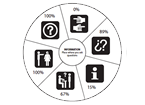
A project to create symbols to help patients and families navigate through hospitals, in any language or with low literacy. [Read More]
World Usability Day 2007-2008: Healthcare
This year’s World Usability Day emphasizes usability in healthcare. In matters of our health, having products and services work better is essential. [Read More]
Patient Safety and Usability: Experiences in the U.S. Department of Veterans Affairs

The patient safety movement acknowledge the importance of usability in tools, processes, and environments to foster systems resistant to human error. [Read More]
Capturing User Requirements in Health and Social Care: Applying UML for unambiguous communication
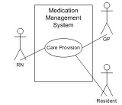
An approach to the Unified Modeling Language that captured what is possibly the most comprehensive set of aging healthcare requirements documented in Australia, and possibly worldwide. [Read More]
Learning about Clinical Trials: The importance of viewpoint

This project was user-centered research into how cancer patients and their families look for information about cancer, its treatments, and how to search for clinical trials. [Read More]
Social Health Networking: A popular online format in unfamiliar territory
Revolution Health explored how one could leverage the dynamic world of social networking in providing targeted support toward better health goals. [Read More]
The View from Here: A Perfect Storm in the ICU
The information design and usability community have a superb opportunity to partner with clinicians to design the tools that will help us overcome ICU challenges. [Read More]
What’s News: Demonstrating Usability of Medical Records
Medical Records Institute launched EMRCompare, a website that compares electronic medical records programs on usability, costs and functionalities. [Read More]
Auditory Displays in Healthcare

How might an auditory display provide background confirmation when all is well, but attract attention when there is an important change? [Read More]
What’s News: Make it Easy
The Arthritis Foundation’s Ease of Use Commendation program seeks to identify products that are easy to use by people with arthritis. [Read More]
What’s Love Got to Do with It? (Issue 1.3)
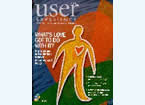
Articles on the ROI of usability and designing for emotions. (Full text not available) [Read More]

